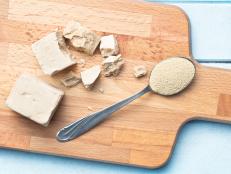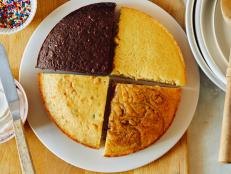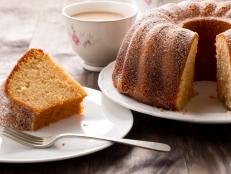What's the Difference Between Dry and Liquid Measuring Cups?
Hint: which one you use makes a big difference.
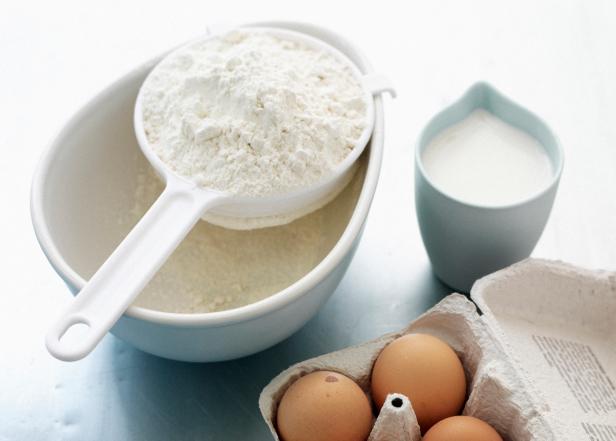
BRETT STEVENS/Getty Images
By Jessie Sheehan for Food Network Kitchen
Jessie Sheehan is a baker and cookbook author.
Accurately measuring ingredients when baking is crucial to producing perfect baked goods every time. Baking is finicky (much more so than cooking) and too much flour, for instance, or too little, can negatively impact the texture of your cookies, cakes, and muffins. Because of this, it is paramount that when measuring ingredients, you use the vessel intended for that ingredient. Read on for more info.
When I'm Baking Can I Use Dry and Liquid Measuring Cups Interchangeably?
We wish it wasn’t so, but the truth of the matter is that when you bake, you have to be very particular about the tools you use to measure ingredients. In other words, when you want to measure milk or water or buttermilk, you need to grab your spouted liquid measuring cup, and when you want to measure sugar or flour or cocoa powder, you need to grab your dry one. We get it that that’s annoying – we’re annoyed too – but when you bake, the tiniest difference in ingredient amount can make a dramatic difference in how your treat bakes up. Unfortunately, although a liquid measure and a dry one actually hold the same volume, the manner in which we measure dry versus wet ingredients greatly differs, and thus the cups are anything but interchangeable. We know this is a little confusing but we’re going to explain it all, don’t worry! There is one tool that works for measuring dry and wet ingredients, and you’ve probably heard of it – and maybe now you’re even willing to invest in one (spoiler alert: we’re talking about a digital scale).
When I’m Cooking (As Opposed to Baking) Can I Use Dry and Liquid Measuring Cups Interchangeably?
Cooking is much more forgiving than baking, so yes, it is rarely a problem if you add a little extra (or not quite enough) water to your polenta, for instance, because you used a dry measuring cup to measure the water; or a little too much (or too little) flour to your bechamel, because you used a liquid measuring cup.
Can I Use a Dry Measuring Cup for Liquid When Baking?
The answer is no, and here’s why. Liquid needs to be measured by the bottom of its meniscus (the curve that forms on the top of liquid). But the meniscus can’t be properly measured in a dry measure, since you must fill the dry measure right to the top with the liquid. The bottom of the meniscus is thus concealed. There is no extra room above the top of a dry measure, the way there is with a liquid measuring cup (the markings on a liquid measuring cup purposefully stop shy of the top of the cup so you can see the meniscus (and also so that you do not spill the liquid in transit to the bowl)). Thus, if you measure liquids in a dry cup, it’s easy to overfill the cup, as well as spill the liquid.

Robert Lowdon/Getty Images
Can I Use a Liquid Measuring Cup for Dry Ingredients when Baking?
Again, no. Flour, for instance, needs to be spooned and leveled (or fluffed scooped, and leveled which some of us prefer). “Leveled” is the operative word, but you can’t “level” in a liquid measuring cup, as the markings stop short of the top of the cup. So, in order to level or flatten the top of the flour, you’d have to tap the cup on the counter to get the flour to settle. In short, you’d then be packing it which is a baking no-no! I mean we believe tapping is okay in a pinch, if you’re measuring granulated or brown sugar (in fact brown is usually packed) or even a nut, or seed or butter – but not flour.
Should I Use a Dry or Liquid Measuring Cup for Sticky Liquids?
A liquid measuring cup is preferable when measuring sticky ingredients like corn syrup, maple syrup or honey. And pro tip: grease the inside of the cup before adding your sticky ingredient to ensure the ingredient releases easily.
Should I Use a Dry or Liquid Measuring Cup for Nut/Seed Butters and Sour Cream/Yogurt?
We like a dry measuring cup for nut buters as well as solid dairy – we find it is easier to clean than a liquid one, and because such ingredients are pretty thick and solid, the likelihood that you will spill some on your journey to the mixing bowl is slim.
Should I Use a Dry or Liquid Measuring Cup for Small Amounts of Dry and Liquid Ingredients?
Neither! Use measuring spoons. Fun fact: it is only when measuring small amounts of ingredients that the measuring tool is the same for both dry and wet ingredients.
Is There a Tool that Will Measure Both Dry and Wet Ingredients Accurately?
Yes! A scale! Measuring by weight is not only the most accurate for measuring ingredients when baking, but also it measures both wet and dry! We’re not suggesting you get rid of your dry and wet measuring cups, but you will definitely use them a whole lot less once a scale is in the house. Amazing, we know.
Related Links:
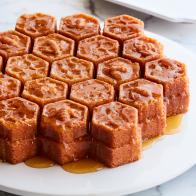
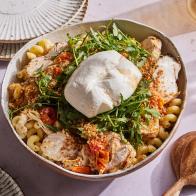
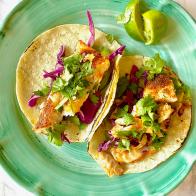
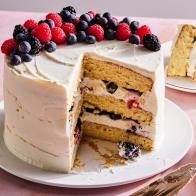
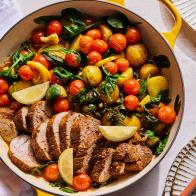









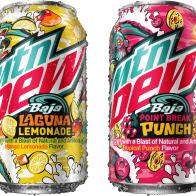
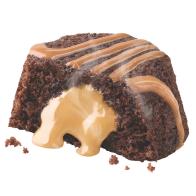







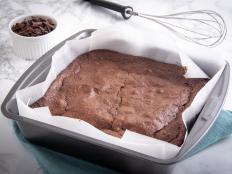
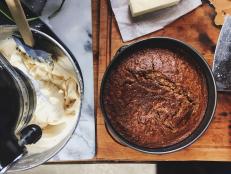
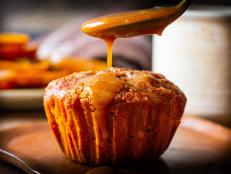


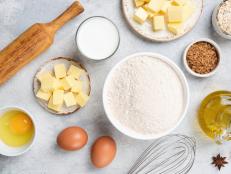
.jpg.rend.hgtvcom.231.174.suffix/1681323015319.jpeg)
